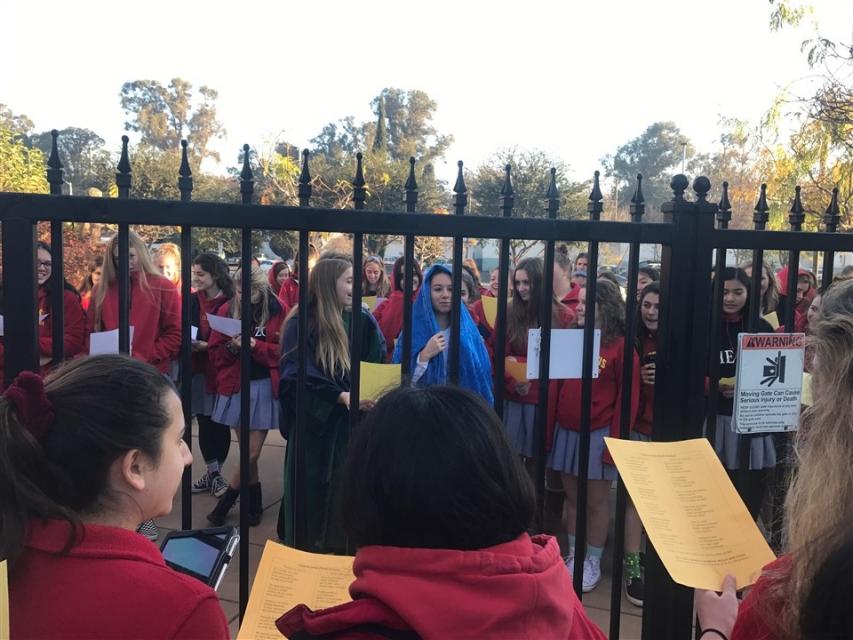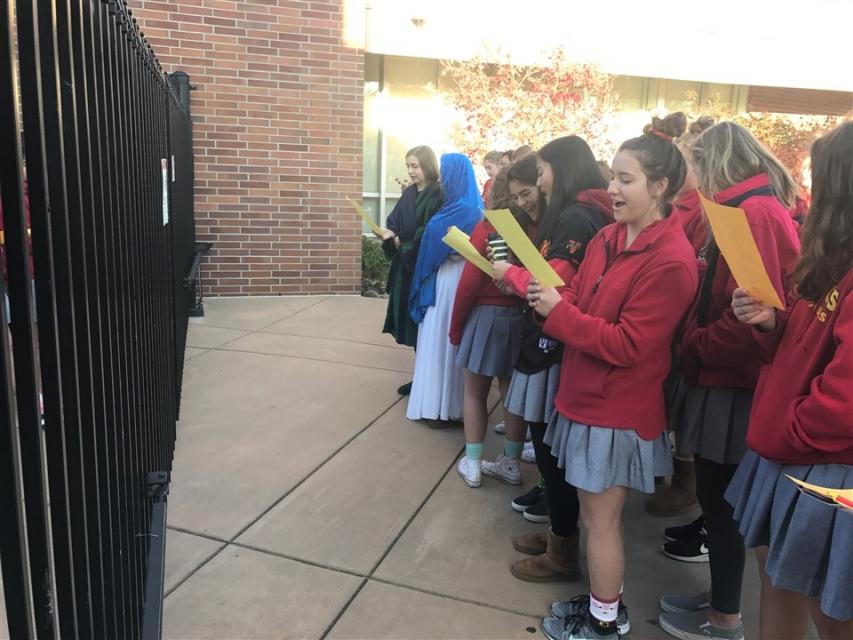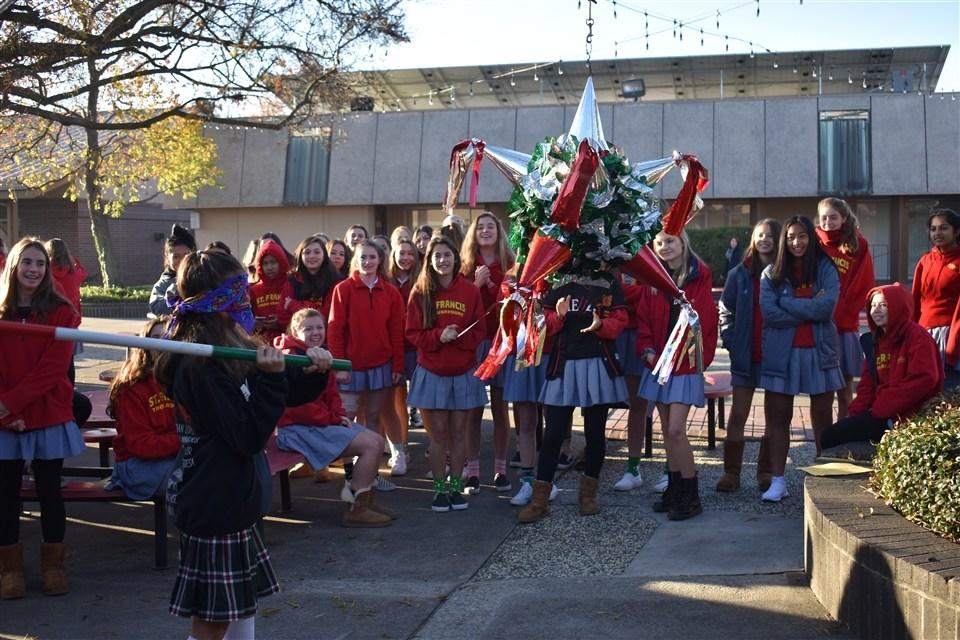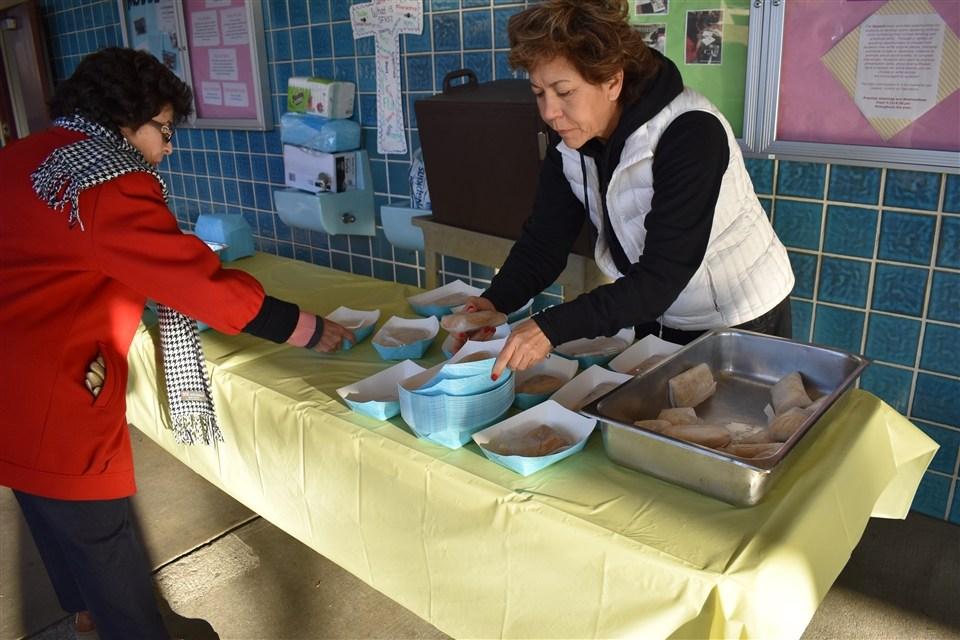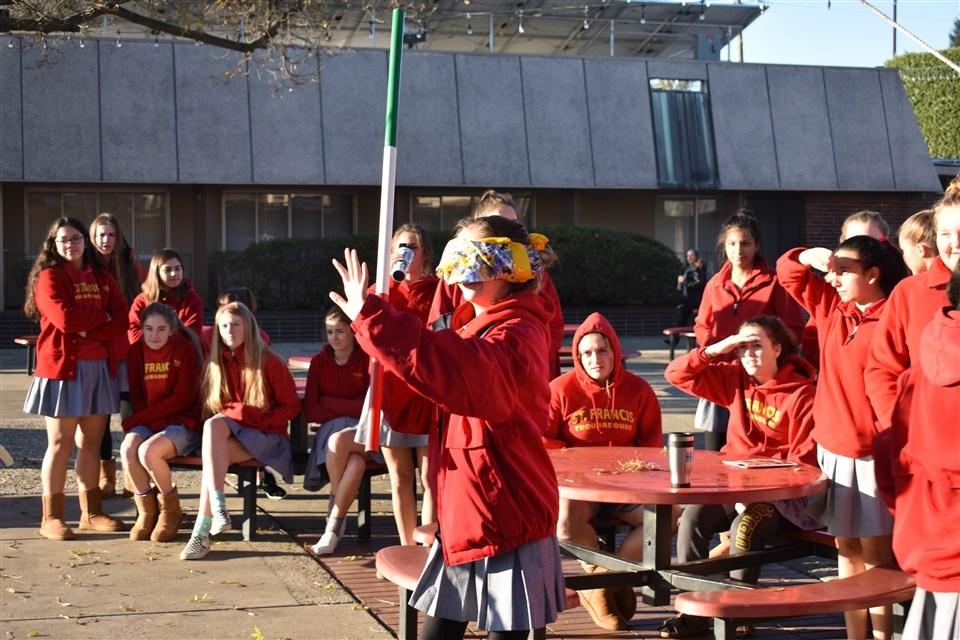Spanish Students Take Part “Las Posadas” Re-enactment
Today our Spanish classes are participating in a re-enactment of Mary’s and Joseph’s search for shelter before the birth of Jesus, Our Lord. We are grateful to our Maintenance Staff for their support and assistance and to Jason Murchinson, from the Epicurean Group and his Kitchen Crew for helping with the preparation of the tamales.
Mrs. Vargas, one of our amazing Spanish faculty members, has provided a wonderful description about the Spanish-speaking Christmas tradition of Las Posadas. Read on to learn more:
Las Posadas takes place between December 16 and December 24. During these period families participate in nightly Christmas processions that re-create the nine days Holy Pilgrimage of Mary and Joseph on their way to Bethlehem from Jerusalem. Individuals may actually play the various parts of Mary and Joseph with the expectant mother riding a real donkey (burro). Attendants, such as angels and shepherds may join, or the pilgrims may carry holy images instead. Along the way, Mary and Joseph ask for shelter each night (pedir posada).
The procession includes musicians with the entire procession singing Christmas carols (villancicos). At the end of each night’s journey, following the Christmas carols (villancicos), children will break open star-shaped piñatas to pick up candy and fruit hidden inside, and there will be a feast. Piñatas are traditionally made out of clay. This is a joyous, lively occasion for everyone who participates.
The Latin American Catholic interpretation of the breaking of piñata represents on the struggle of man against temptations. The seven points of the piñata represent the seven deadly sins. The seven deadly sins are: lust (lujuria), gluttony (gula), greed (avaricia), sloth (pereza), anger (ira), envy (envidia), and pride (soberbia).
The clay pot represents evil and the seasonal fruit and candy inside the temptations of evil. The person with the stick is blindfolded to represent faith. The turning, singing and shouting represent the disorientation that temptation creates. In some traditions, the participant is turned thirty-three times, one for each year of Christ’s life. These interpretations were given to the piñata for catechism purposes. When the piñata breaks, the falling treats inside then represent the rewards of keeping the faith.





